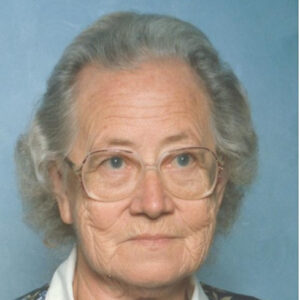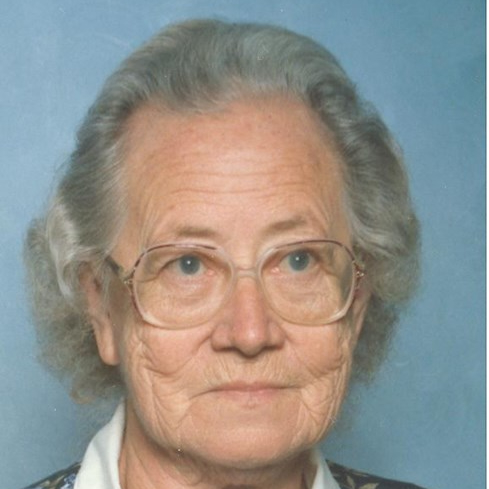
Dorothy Shepherd
(Charlotte) Dorothy Shepherd M.B. Ch.B. (12 November 1885 – 15 November 1952) was a British orthodox physician who was brought up with homeopathy and converted to homeopathy several years after she completed her medical studies. Shepherd subsequently graduated in homeopathy from the Hering College in Chicago after studying under two of James Tyler Kent‘s pupils, George Elias Dienst and John Andrew Tomhagen (1862 – c. 1948).
Dorothy Shepherd was a member of the The London Society for the Abolition of Compulsory Vaccination, alongside Henry Tudor Edmunds, Henry Valentine Knaggs, Erich Kurt Ledermann, and Harold Fergie Woods, and many other homeopaths and medical reformers.
Dorothy Shepherd practiced in Harley Street. She also served in clinics for the poor across London, including as a part-time medical officer for Maternity and Child Welfare in the Borough of Southwark during the 1920s and 1930s.
Charlotte Dorothy Shepherd was born in Southern India on 12 November 1885, the daughter of a missionary.
At the early age of six years she announced her intention to become a doctor …. by the age of seven years she had perused most of her father’s books on mythology, history and metaphysical subjects, often stealing them from the shelves and reading far into the night by the light of a candle. She found Latin a necessity and so coaxed a friend to give her lessons when she was 14 years of age. She absorbed it easily and in a few weeks was as proficient as her tutor.
In 1910, she obtained her M.B. and Ch.B. from the University of Edinburgh. In April the following year, she was entered onto the UK Medical Register.
“… Dorothy Shepherd grew up in South India where her father was a missionary. She studied medicine at Heidelberg medical school and graduated from Edinburgh. She was raised with homeopathic medicine and as a child had access to a copy of Constantine Hering‘s Domestic Physician. Even though she grew up in a homeopathic household in England, at the age of ten she announced her intention to pursue allopathic medical studies. Only after her conventional medical training did she investigate the medicine of her childhood. By her account: “I heard about the Hering College in Chicago. The name Constantine Hering conjured up memories of a tattered old book. I must go and find out the truth which so long had evaded me.” In 1906, Dr. Shepherd went to Chicago and began her studies at the Hering College in Chicago. Her teachers were Dienst and Tomhagen, both pupils of James Tyler Kent. When she returned to Europe Dr. Shepherd put her new skills in to practice. “I must admit that homeopathy has never let me down. Homeopathy is a life long study. It requires the burning of the midnight oil, but it is worthwhile.”… Some time in the 1940’s Dr. Shepherd established a homeopathic center in Bramshott. Little is known about it. She spent long hours providing homeopathic care to the poor in London and was well known for her service and staunch support of homeopathy. On November 15, 1952, after 45 years of service to homeopathy, Dr. Shepherd passed on. Her contributions to homeopathy through her practice and published writings helped bridge the gap during the lean years of homeopathy in the 1900s…. Dorothy Shepherd grew up in a homeopathic household in England. She remembered the familiar ritual of little sugar granules dissolved in a glass of water and the thrill of sipping this mixture out of a spoon. What she does not have memories of, are wearisome days in bed and doctor’s visits. As a child she loved pouring over Constantine Hering‘s Domestic Physician and at the age of ten announced, to the horror of her family, her intention of pursuing medical studies. She reached her goal and began training at Edinburgh University as well as Heidelberg and other continental schools. There was no reference to homeopathy in her training; it was a dim memory from childhood. She specialized in midwifery and surgery in women’s diseases. Her residency was spent in a “homeopathic” hospital where she spent most of her time in surgery and none learning homeopathy. The doctors at this hospital prescribed many remedies at once and patients usually left the dispensary with four or five bottles of colorless water in them. When Dorothy asked one of the doctors “why not put it all in one bottle?” she was frowned upon. Some years later these doctors finally gave up the pretense of calling themselves homeopaths but by this time she had tired of their mumbo jumbo and taken a new post as a surgeon, disgusted with so called homeopathy. Shortly thereafter, she heard about the Hering College in Chicago and James Tyler Kent. But she was still skeptical. It took the following experience to convince her. She developed excruciating sinusitis from the boat passage from England to America. A physician at the college prescribed Nux Vomica CM. He told her to expect an aggravation and then improvement. “It was all double Dutch to me. I smiled in a superior fashion and thanked him. I could not believe that such a microscopic dose could make any difference let alone give me more pain.” But of course, she did have a rapid cure of the sinusitis and subsequently threw herself into her new studies with enthusiasm. During her schooling in Chicago, she had trouble concentrating and her memory was not as strong as it used to be. On the recommendation of a fellow student, she took Tuberculinum 1M which restored her mental acuity and near photographic memory. From then on she was converted to high potencies…”
“… The new breed of Kentian homeopathy was particularly influential on the generation of British homeopaths who were born in the 1870-1890 period, because they were in a position to benefit directly from scholarships which would send them over to Chicago to receive a year’s tuition with the great man himself. James Tyler Kent died in 1916. Several key figures in British homeopathy took up these study tours including Douglas Morris Borland, John Weir, Dorothy Shepherd, Harold Fergie Woods and William Percy Purdom. It is no exaggeration to say that as a result, they returned to the UK with tales of a form of homeopathy bordering on the miraculous...”
“… As WW11 rolled around and trauma became a customary fair, Dorothy Shepherd wholly depended on her new medicine entirely. Since Dr. Shepherd advanced to using homeopathy full time, she never reverted to the “ways of old” again. Having a full staff at her call, she taught and instructed them in the homeopathic protocols for all emergencies including pre and post operative procedures. Her conventional antiseptics were replaced with Calendula, her protocol for broken bones was to administer Arnica, then set the bone. Conventional analgesics that carried side effects were replaced by Hypericum, Arnica and Ledum. Fever cases were given Belladonna, psychological trauma was treated with Aconite and Gelsemium. And her case load wasn’t light. London and surrounding areas where she practiced were under frequent bombings, so her experience was like working in a MASH unit, only with ill prepared civilians…”
In 1939, Shepherd was living at 19 Springfield Road, Marylebone, London. She shared the premises with retired Gloucester Children’s Hospital nurse, Harriet Jane Bush (1866 – 1952). Dorothy Shepherd also lived at Bramshott Court, Liphook, Hampshire.
Dorothy Shepherd died on 15th November 1952, three days shy of her 67th birthday. A Tribute to her, written by Miss Gweneth E. Leonard, was published in the January 1953 edition of Health & You (Incorporating Health Thyself, later Homoeopathic World). Leonard emphasized the importance of Shepherd’s faith to her homeopathic practice:
From her later writings it will be realized by many that the Doctor had a deep mystical nature. Her faith in God has ever been her rock, and in these later years she has added much great knowledge to that faith. Such knowledge was the undoubted source of her success in treating rare and difficult diseases, for she was enabled to go behind the physical representation and find the oft-times deeply hidden inner causes. From this knowledge her understanding of the patient became almost uncanny, but it ensured that the remedy was the only one and the right one for the picture. Her knowledge of remedies was tremendous, they were indeed her personal friends, and she lived constantly with them.” It is the only way to know a little of Homoeopathy” she has said more than once, and she never claimed to know more than “just a little.” “You must make the remedies your friends and know every little characteristic about them, then you recognize them easily anywhere.” The Doctor read about her “friends” every night, either because a sufferer had come to her for help and she needed to be reassured of the details or from the sheer joy and interest she had in Homoeopathic medicines. Those who have lived intimately with Doctor Shepherd have lived intimately with Homoeopathy. It has filled their lives with an absorbing, expanding interest that will continue to grow and develop. The determination to establish this creative art-of medicine as the only true method of cure for the many diseases that afflict mankind is the greatest tribute that can be paid to Doctor Shepherd by those who really love her.”
Select Publications:
- The Magic of the Minimum Dose (1938)
- More Magic of the Minimum Dose (1945)
- Homeopathy for the First Aider (1945)
- A Dictionary of Domestic Medicine with John Henry Clarke (1949)
- A Physician’s Posy (1951)
- The New Art and Science of Medicine (1956)
- Homeopathy in Epidemic Diseases (c. 1967)
- Two Lectures (1981)
Of interest:
* Dr Shepherd did her doctoral studies in Heidelberg, then she qualified in Edinburgh. She went to America to study homeopathy in 1906.
Dorothy Shepherd’s companion and, after her death, compiler of her unpublished writings, was Gweneth Eleanor Leonard (alt, Robinson) (b. Camberwell, 1908). She had an interest in the paranormal, and corresponded with psychotherapist and parapsychologist Nandor Fodor in 1936.



it is very useful information about our pioneers in homoeopathy it will guide in our practice
Congratulations! Julian Winston, the late great American lay homeopathic historian was NEVER able to find a photo of Dorothy Shepherd. but YOU found one!